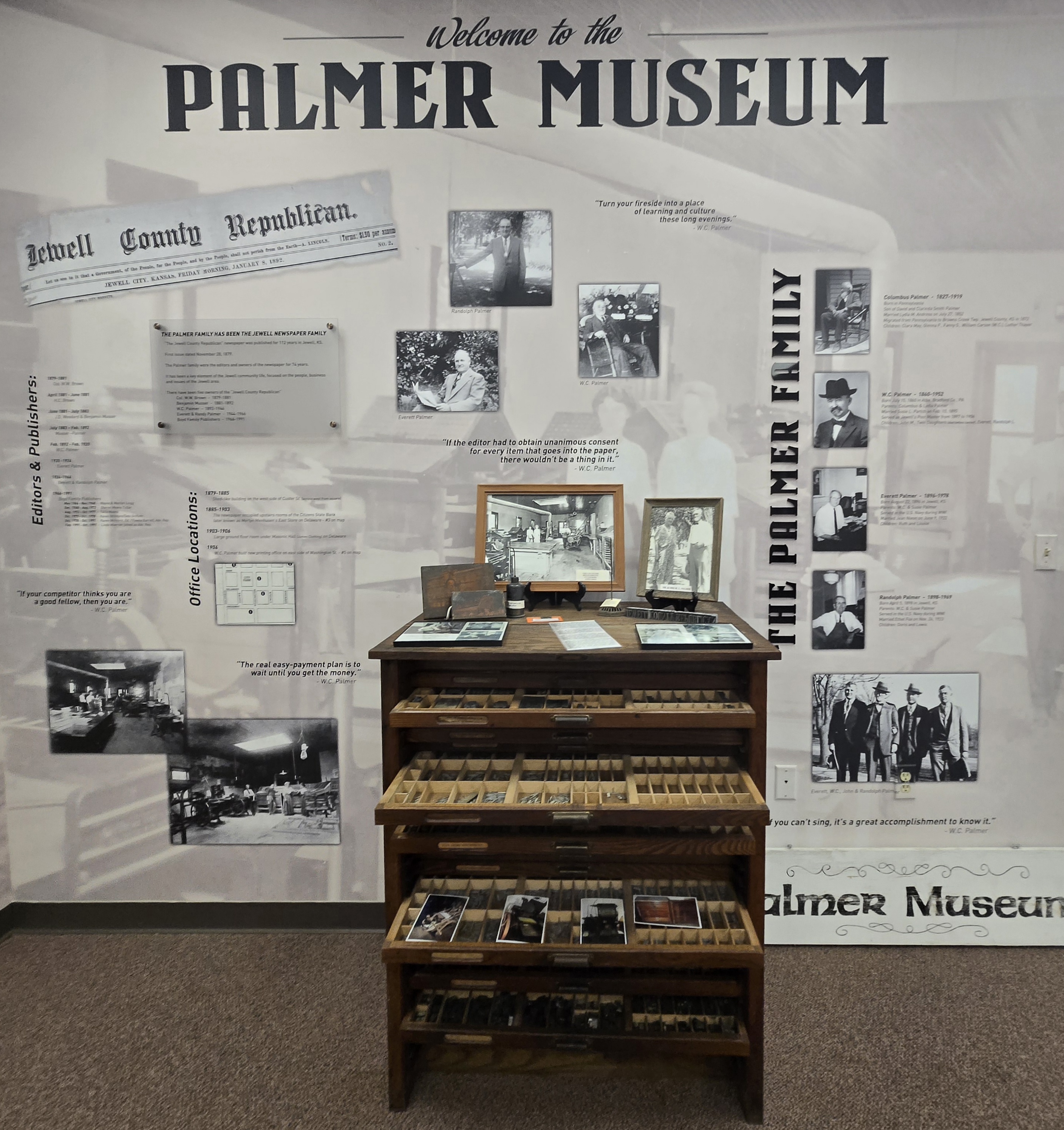Palmer Museum

History of Jewell
The early settlers who arrived at the forks of Buffalo Creek April 12, 1870 took claims in the vicinity of Jewell City and remained there through the troublesome Indian threats in 1870 and the War for Independence. The beautiful town site of Jewell City was selected and filed under the Town Site Act of May 6, 1870. A few days later, in the midst of the Indian threat, the settlers decided to erect Fort Jewell, a sod fort. They broke prairie, built cabins, dug "dugouts", and at the same time received messages from couriers about the crimes the Cheyenne were committing. They had killed three white men working on a dam near Solomon Rapids. The site of the sod fort was the block in Jewell City now bounded on the south by Delaware Street and on the west by Belle Street. To man the fort, the settlers organized the "Buffalo Militia", a group of 28 volunteers. They were relieved in June 1870 by a company of U.S. soldiers who remained until fall.
Jewell City, located in the most densely populated part of Jewell County at the time, was the first town to be organized and it was named the county seat. The leaders who organized the town copied the county name and added the word city to specifically identify their town. Jewell County was named after Lieutenant Colonel Lewis R. Jewell, a gallant officer of the Civil War. In 1859 he settled near Fort Scott, Kansas where he became a farmer and stock rancher. He never saw the county which bears his name.
As the town of Jewell City became established, the settlers began to organize political units and religious groups. Also the need for a school became apparent and the citizens met on January 28, 1871 to begin the organization of School District No. 1. Gradually businesses, banks, a newspaper, and a hotel were a part of Jewell City and buildings were constructed to houses these concerns.
By 1873 the population of the northern part of Jewell County had grown rapidly. It was then that an election voter favored moving the county seat to Jewell Centre. The name Jewell Centre was later changed to Mankato.
Eventually the word City was dropped from the town's name. And, as we look back on the history of Jewell, we realize that out of the early day courage of strong individuals our town has grown, prospered, changed, and developed into what it is today.
(Information for the brief history was obtained from the book, Story of the Old Home Town-Jewell City, Kansas, a reprint of 28 weekly installments written be Everett Palmer and originally published in The Jewell County Republican beginning April 28, 1933)